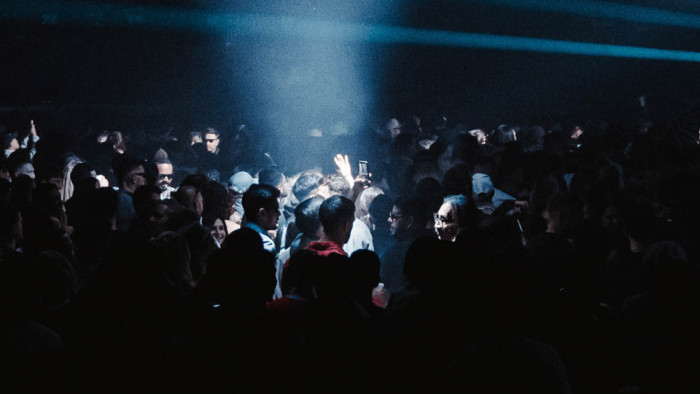Why is Britain suffering from an ecstasy overdose?
Why has a mildly hallucinogenic stimulant, originally used as a therapy aid in 1970s California, become so hazardously potent?


It’s a dangerous time to be an ecstasy user in Britain. This summer, as the music festival season cranks into gear and schools close, tens of thousands of young people will be getting high, perhaps for the first time, on a drug that’s been a mainstay of the British party scene for three decades. Yet never before has ecstasy been so potent or deadly.
Since 2012, ecstasy pills and powder have been getting progressively stronger as producers have ramped up the amount of MDMA, the mildly hallucinogenic stimulant, they contain. In the space of only a few years, pill potency has doubled and tripled. Pills are a different proposition to what the parents of today’s teenagers were necking in the 80s and 90s. Back then, the average pill contained around 80-100mg of MDMA. Now pills containing 150-200mg dominate the market, alongside so-called ‘super-pills’.
Earlier this year the Trimbos Institute, which tests pills in Holland, came across a skull-shaped tablet containing 360mg – enough MDMA to get five people high.
Ecstasy is far from being the demonic ‘Russian Roulette’ drug the media, police, and judges make it out to be. At the very least 4.3 million pills are dropped each year in England and Wales, so if the chance of death really was one in six, Britain would have become a mass burial ground by now. But what is clear is that as the purity has jumped, so have the number of deaths. In 2016, the latest year for which figures are available, a record 98 people died after taking ecstasy in the UK. The previous high, at the height of Britain’s ecstasy boom in 2002, had been 79 deaths.
In almost all cases, these deaths have not been down to ‘rogue batches’ of pills laced with strange adulterants: they are caused by what coroners call ‘MDMA toxicity’; in other words, too high a dose of MDMA.

A blue ‘punisher’ pill, found to contain more than 300mg of MDMA
“Imagine if you ordered a large glass of wine in a bar” says Mike Power, author of Drugs 2.0, an expert on the global ecstasy trade. “It looks, costs, smells and weighs the same as any normal drink. It tastes the same. But when you drink a glass of it, unbeknown to you, it’s 100 per cent pure alcohol.
“But it doesn’t kick in straight away. So you have another. And then another. Within an hour you’ve necked the equivalent of a bottle and a half of scotch. This is the reality of the ecstasy market.”
Tragically, there will be more deaths, more devastated families and more groups of friends who go on a night out but do not all return. On May 27 Georgia Jones, 18, and Tommy Cowan, 20, died after separately taking ecstasy at the Mutiny music festival in Portsmouth. The festival was cancelled.
“Her heart stopped numerous times, and then her lungs filled with blood and fluid”
The horror of watching her daughter die from MDMA poisoning was relayed by Georgia’s mother Janine, who wrote on Facebook: “The pills caused her temperature to rise so high it made her fit for 45 mins. Her heartbeat was irregular and stopped numerous times and then her lungs filled with blood and fluid and I made the decision to turn everything off. My little girl was 18 and full of life I just hope this stops at least some of you from ending up the same.”
There were various unconfirmed rumours about super strong pills being sold at the festival. What is for sure is that in Bristol shortly after the deaths, drug safety charity The Loop issued an alert after testing a blue skull ‘punisher’ pill containing more than 300mg of MDMA.

Georgia Jones and Tommy Cowan, who both died after taking ecstasy at Mutiny festival
So why has a mildly hallucinogenic stimulant, originally used as a therapy aid in 1970s California, which inspired a revolution in dance music and got rival football hooligans hugging on the terraces in the 1990s, become so hazardously potent? The answer is down to chemistry, prohibition, marketing – and a massive drug bust in Cambodia in 2008.
Read more: How to stay safe when taking drugs at a festival
Less than a decade ago, in 2009, forensic tests revealed most “ecstasy” pills in the UK actually contained zero MDMA. They were duds sold for £2 a pop, stuffed with a mix of third-rate amphetamines and vomit-inducing piperazines that no-one liked. This was largely due to a 2008 seizure of safrole oil, the starting ingredient of ecstasy, in Cambodia. The authorities seized 33 tons of safrole oil – enough to supply the UK market, one of the biggest markets in the world, for five years.
As a result of the bust and subsequent disappearance of MDMA from pills, ecstasy use plummeted. The rave generation turned its back on the drug and it became a drug necked by kids on street corners and stairwells as a cheap alternative to cider.
But the law’s sense of achievement was brief. Instead, people started buying the legal high mephedrone (nicknamed ‘meow meow’ by the British press) online and getting it delivered to their door by Royal Mail. Although it was banned in a frenzy of hype in 2010, the popularity of mephedrone opened up the online drug trade, which – in turn –would later enable the mass supply of high quality ecstasy pills.
“The fewer pills you’re caught with, the less punishment you receive: squeezing double the MDMA into one pill made sense”
Behind the scenes, enterprising chemists working for the big Dutch pill makers who dominate Europe’s ecstasy market had hit upon a new way of making MDMA using a waxy chemical, PMK-glycidate. The chemical sparked the global ecstasy trade back into life.
“The process of E-making now is industrialised,” says Power, who explains China is supplying European chemists with thousands of tonnes of PMK-glycidate, bringing the production price down to under £1 per gram. As a result, the price of a kilo of synthesised MDMA on the black market has plummeted from up to £40,000 a kilo a decade ago to between £4,000 and £5,000 now.
Yet an abundance of this precursor chemical does not fully explain why pill makers are piling so much MDMA into their pills. Like any business, ecstasy producers are primarily motivated by profit, so why the excess? One Dutch drug worker told me the fewer pills drug users are caught with, the less punishment they will receive, so squeezing double the MDMA into one pill makes sense.
In reality, it’s more about economics than an altruistic concern for customers. In a crowded market place, especially on the dark web which is increasingly being used by dealers buying in bulk to sell in clubs and festivals, those who shout the loudest get noticed.

Pills are pressed into shapes, such as Donald Trump’s head or the Snapchat logo, to attract customers
Pressing pills into Donald Trump or a Snapchat logo is one way of doing it. The other way of expanding market share is by making stronger pills, and offering them cheaper than your competitors. “Pills get a reputation and punters want the most bang for their buck,” says Power. The result has been an arms race between producers competing to make stronger and stronger ecstasy.
I spoke to Sam, who has been selling ecstasy in clubs and to a regular phone list of customers since leaving school 14 years ago. He told me that 10 years ago people were “happy with what they got”, but since then they have become eager for higher-strength products.
“Once the benchmark is set at certain level, if you go lower than that people aren’t as impressed,” he says, explaining the benchmark is now pills with 200 to 220mg.
“It’s like stronger cocaine going for £100 a gram, people don’t want the cheaper, weaker stuff anymore.” The stronger pills also mean more money for Sam, because they have a better mark-up than the old school 100mg pills.
“I warn my customers not to double drop”
His customers draw a line at the super-strong pills, however. They don’t sell well, says Sam, “because people come back to me saying they are too strong or they don’t like having to break them in half”. Probably one of the more caring dealers around, Sam warns his customers not to double drop if he’s selling a particularly strong pill, but he recognises the dangers of the new breed of pills that will be circulating around the country this summer.
“I used to take pills and people I’d bought them from had no idea if they were strong or not, you’d take it and hope for the best. They were never that strong. Nowadays if you make a mistake the consequences are much worse.
“There is more information about drugs, but not everyone is interested in being informed, some are more interested in getting wrecked.”
According to the Global Drug Survey, the perfect ecstasy pill contains between 100-200mg MDMA. Unsurprisingly, nine out of 10 of those surveyed would prefer the dose to be imprinted on the pill. But the fact that ecstasy is an illegal drug means the government has no control over what pills contain. What’s more, prohibition is a big win for organised criminals, who sit at the top of the ecstasy money-go-round.
“I became friendly with someone who had pill-making contacts out in Amsterdam”
In April, police in the Netherlands busted a Dutch-Polish drug firm involved in the production of ecstasy, uncovering encrypted cellphones, four firearms, four drug labs, 67 tons of chemicals, over a hundred kilos of MDMA crystals, 57 litres of MDMA oil and 32 litres of PMK.
Below this strata, a never-ending parade of smugglers are willing to take a risk for a piece of the action. Pieter Tritton was one of them. He regularly smuggled 2,000 vacuum-packed ecstasy pills sewn into the lining of his coat, on the car ferry from Holland, before being jailed in 2002 when police uncovered 5,000 pills at his lock up in Gloucestershire.
“It was all relatively straight forward,” he says. “I became friendly with someone who had pill-making contacts out in Amsterdam, so we decided to put together an import.
“People will always be tempted because of the huge profits to be made.”
There is now a new breed of international smugglers who need no underworld contacts. In March a gang of students from the University of Manchester were jailed for 18 years after selling £800,000 worth of ecstasy, ketamine and LSD over the dark web. Meanwhile, as police have turned their attentions elsewhere, the number of people being convicted for supplying the drug has more than halved in 10 years.
The government is trapped in an ever-tightening knot of its own making. As the Economist said earlier this month: “the reason for discouraging drug use is that drugs are harmful, so it is perverse to argue that they should be kept harmful in order to discourage their use”.

In 2016, a record 98 people died after taking ecstasy in the UK
Between 1993 and 2016, a total of 1,176 people died in the UK after taking ecstasy. As potency increases, so will the death toll. It’s an inevitable rule of prohibition: the more the authorities clamp down on an illegal drug, be it heroin, Spice, cannabis, cocaine or ecstasy, the stronger it gets.
“We need to legalise and regulate and control the production, sale and distribution of ecstasy now,” says Power. “Thirty years after acid house, the drug is more popular, more ubiquitous, more abundant than ever. And still politicians leave it to gangsters to safeguard users: by which I mean our friends, and their children, and our children.”
For more information on festival drug testing, visit wearetheloop.org
Related: How to stay safe when taking drugs at a festival
(Pics: Getty/Facebook)
Latest


London has a new 2,800-capacity music venue


New Godzilla film casts Jurassic Park's Sam Neill
Related Reviews and Shortlists







